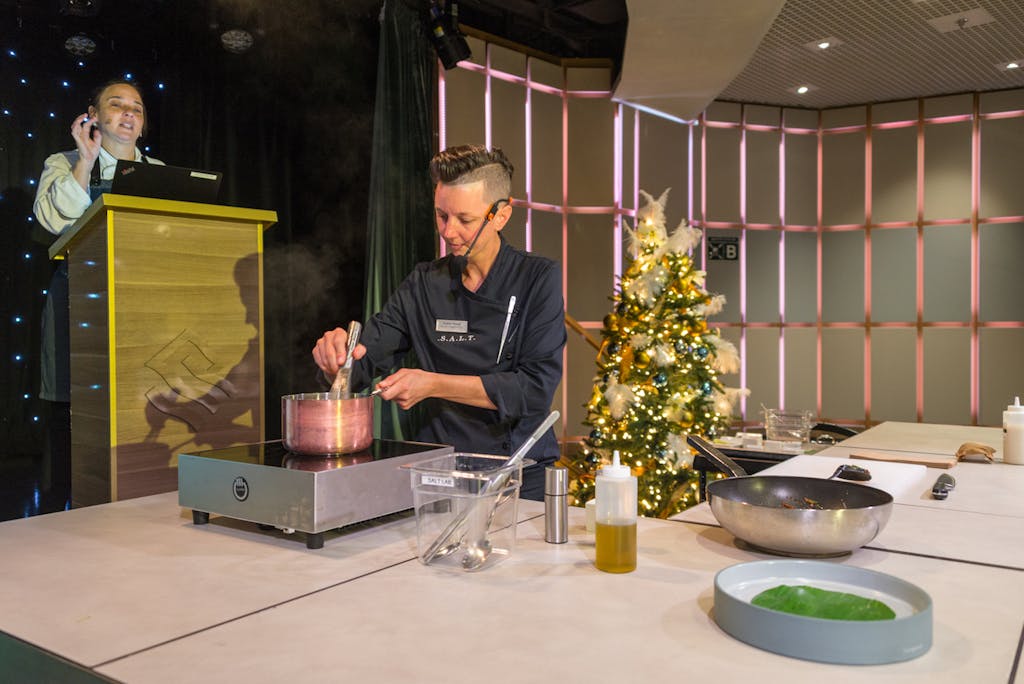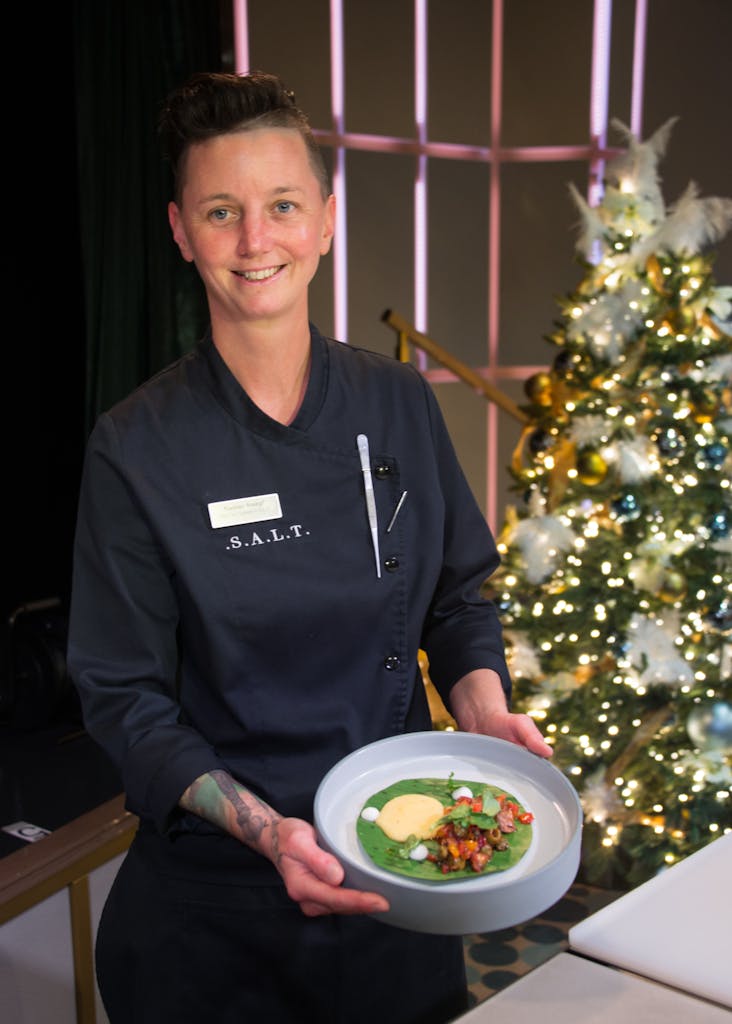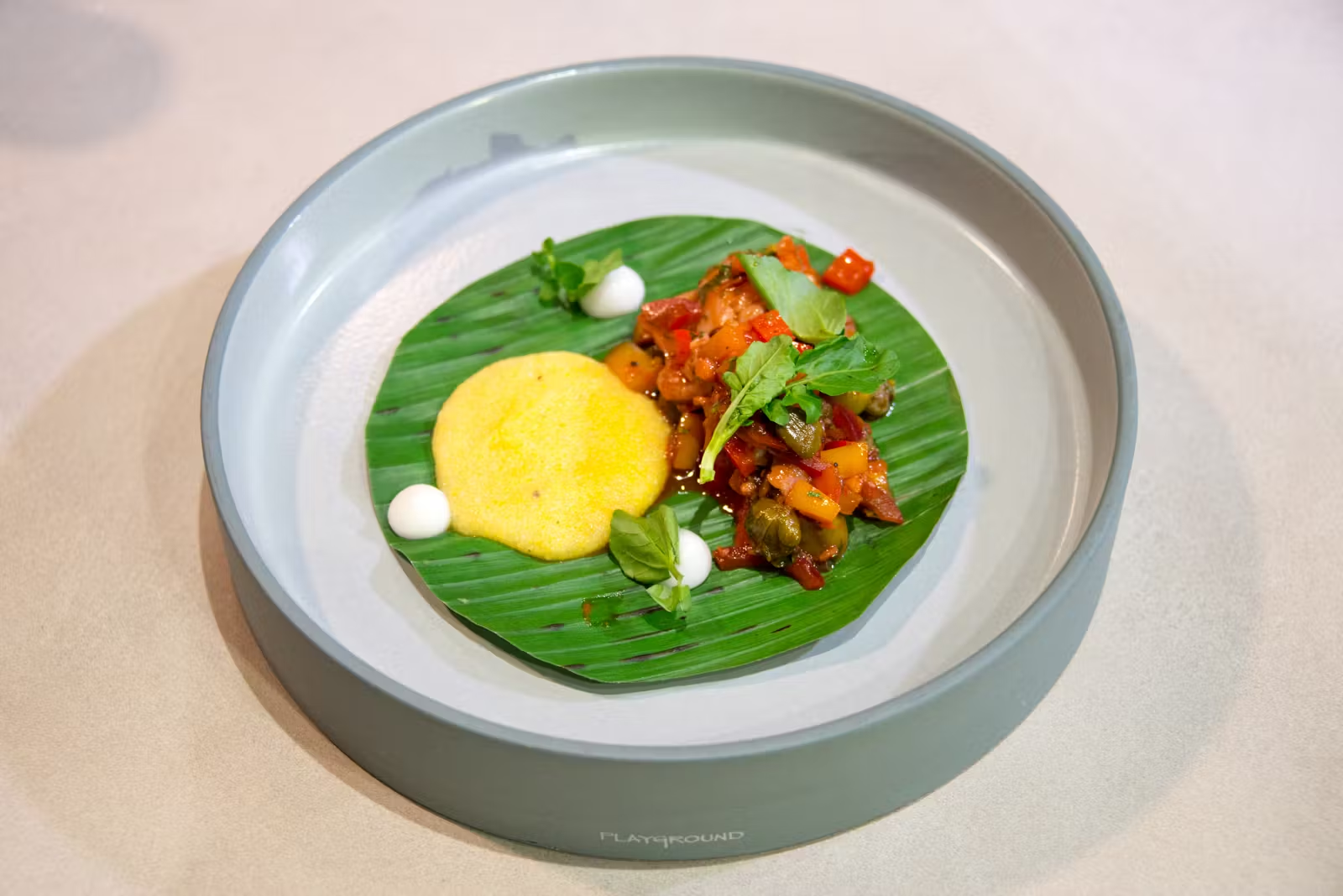Taste and Tradition: S.A.L.T. Celebrates Christmas Tamales
As a native of San Diego, I’ve been hooked on the cuisine of Mexico and points south for as long as I can remember. Weaned on salsa, one friend of mine says.
While I usually decamp to restaurants for my favorite dishes, there are a few easy things I make at home — chilaquiles topped with eggs are one, my delicious guacamole is another, and I’ve found a dynamite recipe for chili verde that we can load into our Instant Pot with terrific results.
Tamales, however, are not one of my go-to’s. I’ve been warned that their preparation is time-consuming, and I’m just not one for an involved stint in the kitchen. Still, whether the masa (corn dough) is stuffed with chicken or pork, or other items, I adore biting into a well-made tamale.
On a recent sailing aboard Silver Moon, I was delighted to learn about not just the cultural history of the tamale, but also to discover a tamale recipe even I can make at home.

Food of the Gods
The tamale is one of the original portable foods. Even prior to the Aztec and Maya civilizations, tamales were used for travel, for hunting trips. Because the gods were thought to make humans from corn, tamales were seen as the food of the gods, and they were served to celebrate sacred occasions, like Christmas.
“During the Tamales: A Ten Thousand Year History” culinary demonstration onboard Silver Moon, we heard about the tamalada (tamale making party), a tradition dating back thousands of years. Today, most often at Christmas, or perhaps during semana santa (the holy week leading to Easter), families gather for a tamalada to craft these treats. Each person takes a different task — preparing the masa, soaking the corn husks, cooking the filling, and assembling the tamales one by one — supervised closely by doting abuelitas (grandmothers).
S.A.L.T. host Eva Mulligan told us how tamales are not limited to Mexico and Guatemala, as I’d assumed — hundreds of different recipe variations are found throughout Latin America, all the way down to the tip of Argentina.
In addition to the masa, what tamales throughout Latin America share is a wrapper. “It’s usually corn husks in Mexico, but in Nicaragua or Honduras, it might be banana leaves,” explained Chef Eva. The ingredients stuffed inside the masa vary regionally: beans, cheese, shrimp, fruit, chilis, raisins, squash blossoms, or even more corn.
“With the abuelas, nothing is measured out,” Chef Eva said. “The recipes are all passed down through the generations, and thetamalada is very communal, something that brings families together.”
Chef Eva was on stage for the culinary demonstration, accompanied by Chef Nadine, from Silver Moon’s S.A.L.T. Kitchen. She prepared a recipe for tamal de olla, which translates to tamale of the pot. The ingredients came together easily, quickly, and what emerged was what I’d call a kind of deconstructed tamale. There was no wrapper and by using par-cooked polenta a good deal of prep time was dodged. (Don’t tell the abuelas!).
The taste? Delicioso!
Tamal de Olla Recipe

Ingredients:
- 200gr – 8oz par-cooked polenta
- 4 chicken breasts
- 2 tablespoons olive oil
- Salt and pepper
- 1 teaspoon oregano
- 2 garlic cloves, minced
- 1/2 teaspoon annatto seeds or annatto oil
- 1 onion, finely chopped
- 1/2 yellow pepper, chopped
- 1/2 red pepper, chopped
- 1 tablespoon capers
- 3/4 cup green olives
- 200gr / 8 oz tomato sauce
- 1/4 cup red wine vinegar
- 1/2 cup red wine
- 1 hot chili pepper, minced (to taste)
Preparation
- Season the chicken with salt, pepper and oregano for at least 1 hour
- Heat the oil over medium high heat and add the chicken to brown. Remove the chicken, turn down the heat to medium and add the annatto seeds (if using), the onion, peppers and garlic. Return the chicken to the pan and add the wine and vinegar and reduce.
- Add the tomato sauce, turn the heat down and let it simmer until chicken is cooked. Check the seasoning. Add the capers and olives and let it simmer for 5 to 10 more minutes.
- Prepare the polenta according to package instructions.
- Put the chicken in the bottom of a baking dish, cover with the polenta and bake for 20 minutes at 190C/375°F.
Cooking time: 25 minutes
Prep time: 1.5 hours
Portions: 4 servings
